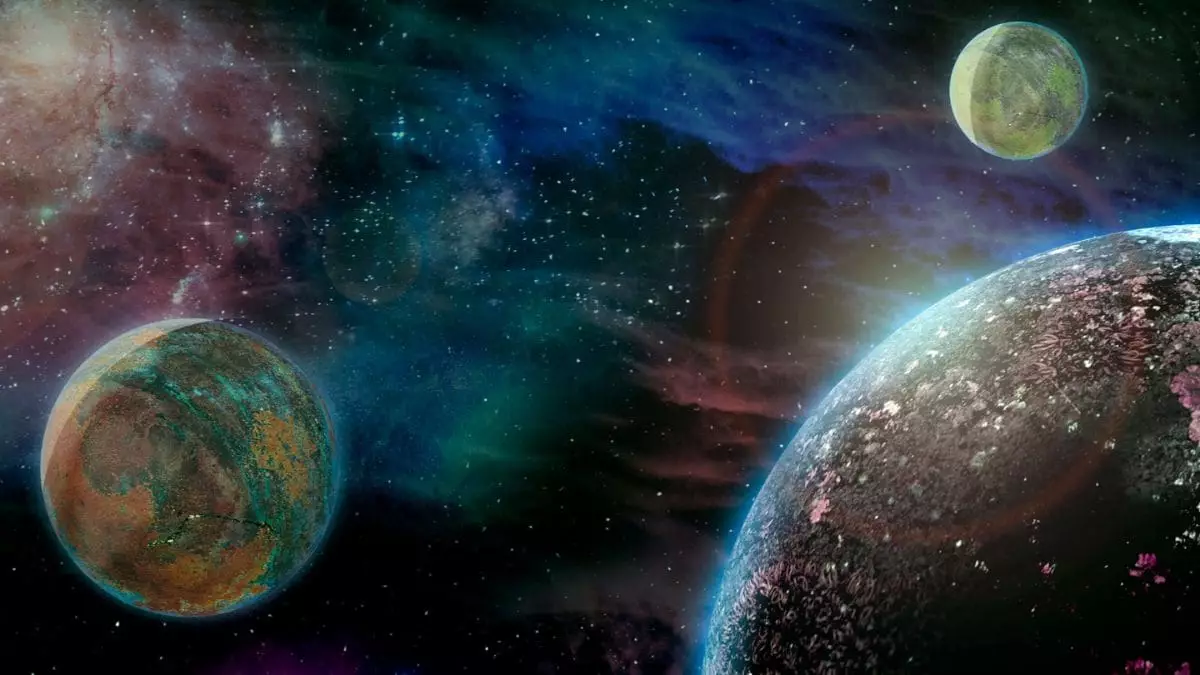For decades, scientists have grappled with an unsettling question: where is all the ordinary matter? In the aftermath of the Big Bang, it was predicted that baryonic matter—a category of ordinary matter consisting of protons, neutrons, and electrons—should be abundant in the universe. Yet, despite an exodus of sophisticated telescopes and relentless research, much of this matter remained elusive. The breakthrough discovery of fast radio bursts (FRBs) offers hope that the pieces of this cosmic puzzle are finally falling into place.
The Cosmic Beacons
FRBs, the enigmatic flashes of radio waves originating from distant galaxies, have long fascinated astronomers. Characterized by their brief yet intense bursts of energy, they have emerged as the universe’s unforeseen watchdogs, illuminating hidden pockets of baryonic matter scattered throughout the cosmic landscape. Recent research spearheaded by teams from Caltech and the Harvard-Smithsonian Centre for Astrophysics is a celebrated testament to the power of modern astronomy. By processing data from 69 FRBs traveling over 9 billion light-years, scientists managed to map the distribution of ordinary matter with a precision that was previously thought unattainable.
A New Era of Discovery
The findings—76% of the identified baryonic matter existing in intergalactic space, 15% in galactic haloes, and the remaining 9% nestled within the confines of galaxies—redefines our understanding of the universe. Previous models portrayed dark matter as the primary architect of galactic formation; however, this newfound clarity introduces a more nuanced perception. The universe isn’t solely governed by the invisible grip of dark matter—it is also shaped by the delicate distribution of ordinary matter that surrounds us.
Moreover, the validation that FRBs can act as “smart tools” heralds a new era of discovery in astrophysics. Each radio burst now stands as a beacon, shedding light on the evolution and large-scale structure of the universe. The findings are not merely theoretical. Instruments like Caltech’s Deep Synoptic Array and Australia’s ASKAP (Australian Square Kilometre Array Pathfinder) are set to revolutionize how we study cosmic phenomena. With hundreds or even thousands of FRBs detectable each year, we have an unprecedented opportunity to deepen our understanding of the cosmos.
Beyond the Stars: Implications for Humanity
This discovery carries implications that transcend academic curiosity. As humanity grapples with existential questions about our place in the universe, the bridging of knowledge gaps opens discussions that reach into the philosophical and ethical realms. If our universe is magnificent enough to house such complexities, what does it say about our planet’s significance? Conversely, it begs the question of how we interact with the rest of the universe—not just passively, but as an integral part of cosmic evolution.
The knowledge we glean from FRBs is akin to casting a larger net into an ocean once thought empty. It challenges the very core of our understanding, urging humanity to rethink its narrative in the grand tapestry of existence. The cosmos has always been a source of wonder, but thanks to these cosmic signals, it is now an interactive participant in the unfolding story of human discovery. The patterns emerging from this vibrant cosmos inspire not just awe, but a new ambition for exploration and understanding.


Leave a Reply